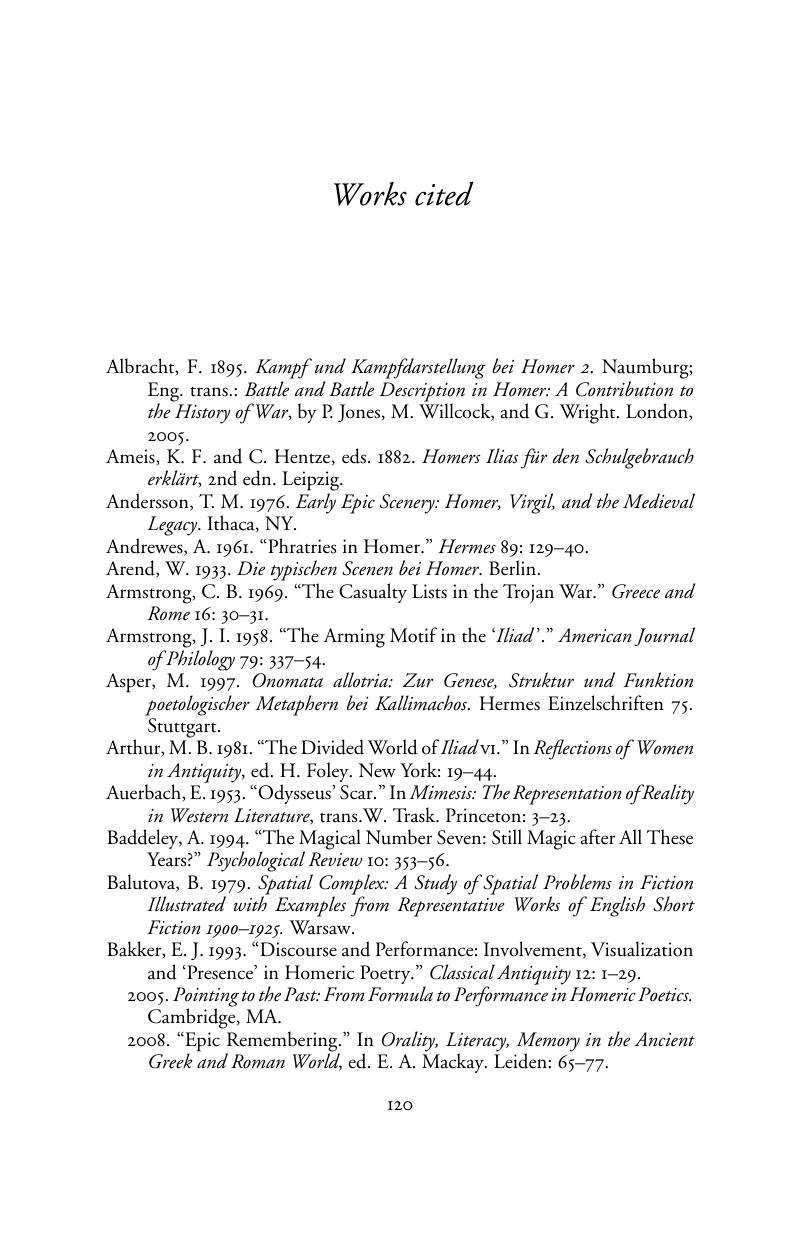Works cited
Published online by Cambridge University Press: 05 October 2012
Summary

- Type
- Chapter
- Information
- Homer's Trojan TheaterSpace, Vision, and Memory in the IIiad, pp. 120 - 131Publisher: Cambridge University PressPrint publication year: 2011



